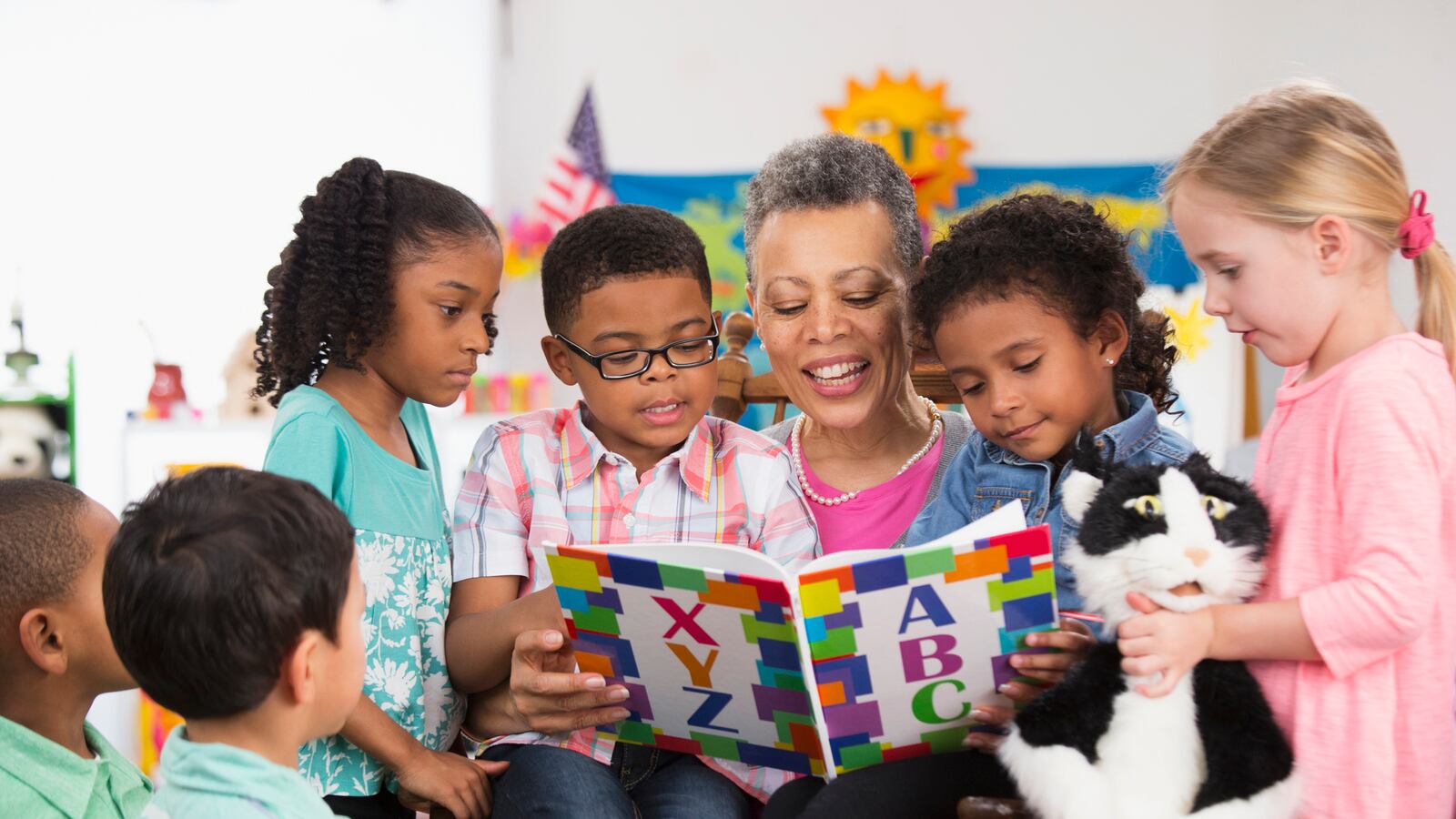More than three-quarters of Illinois children are still falling short on kindergarten readiness, according to data released Tuesday and collected statewide last fall.
This is the second year Illinois has implemented the Kindergarten Individual Development Survey (KIDS) — an observational assessment by teachers who log developmental behaviors to gauge kindergarten readiness. Most of the data points saw slight increases of 1 to 5 percentage points from the previous year.
“On the face of it, not much has changed,” said Geoffrey Nagle, CEO of the Erikson Institute, a Chicago organization studying childhood development. “For this kind of data to change statewide, you would have to do a statewide intervention … if you want these numbers to change, we’re going to have to do something — invest in children, invest in supports for children and families.”
Illinois governor J.B. Pritzker pledged $100 million to early childhood education in his first budget, for 2019-20. However, Nagle said, given how comparatively little Illinois spends on preschoolers at the moment, it will take a more substantial investment to see results in an assessment like KIDS.
In 2017, Illinois spent an average of $15,337 per student in K-12 but only $3,306 for every Illinois child under age 6, according to the Risk and Reach Report from Nagle’s Erikson Institute; however, young children often cost more to educate because they need more adults in the room, Nagle said.
Teresa Ramos, vice president of policy and advocacy at Illinois Action for Children, an advocacy group connecting families and providers with funding, emphasized that KIDS is meant as a tool to illuminate the quality of early childhood more broadly, not judge kindergarten teachers or their districts.
“This is shining a flashlight on what is happening in the years before kindergarten,” Ramos said. “As we frame it in that way, it allows for teachers to see different things coming out of kids [in kindergarten] and be OK with that.”
Rather than an exam, KIDS records teachers’ observations when students perform tasks such as sharing materials, sorting objects, recognizing words, and raising a hand before speaking. Students were measured in three categories: social and emotional development, language and literacy development, and math. In order to be considered kindergarten ready, students had to demonstrate proficiency in all three, said Carisa Hurley, director of early childhood at the Illinois State Board of Education.
“Teachers are observing students, and they’re documenting their interactions and behaviors during the first 40 days of instruction,” Hurley said. “As children are going about their regular, everyday routines, they’re playing, they’re interacting with their peers, they’re doing schoolwork, and following directions. So they’re actually observing children in that environment so they can document what children’s abilities are.”
Hurley said the tool remained the same from last year to this year, but the state has provided more professional development and training for teachers to ensure accurate measurement.
Though Hurley cautioned against making year-to-year comparisons, she said districts can use KIDS data to recognize which communities need more support.
Low-income students receiving subsidized lunch were 16 percentage points behind their more affluent peers, demonstrating well-documented income disparities in access to early childhood education.
By race, only 19% of black students and 15% of Latinx students demonstrated kindergarten readiness, compared with 32% of their white peers. However, Nagle emphasized that all students need support at this point with such low numbers in all groups.
Across the state, 39% of kindergartners failed to demonstrate readiness in any category. Only 26% of students displayed behaviors across all three, considered kindergarten ready. More than half of students met the benchmarks in social and emotional learning, but in math, only one in three students were prepared, struggling to identify numbers, shapes and patterns.
“A large percentage of our kids are not ready for school,” Nagle said. “That should be completely unacceptable to everyone from any parent to every leader in the state… because this is an indicator of what the future of Illinois is, and right now the future is not looking bright.”
Almost 125,000 Illinois kindergartners, 89% of those enrolled in state kindergarten programs, were observed for the survey, developed by San Francisco-based WestEd, up from 81% last year. Nagle said both of these figures suggest the data provides a good snapshot of early learning in Illinois.
Still, only 30% of students are enrolled in state-funded preschool programs. In order to change access, Hurley said, the state needs to invest more funding in those programs.
For Ramos, the data highlights a lot of information she and other early childhood advocates already know — “We know there’s a lot of support that needs to happen in the earliest years of life… We know we need to focus on access to high-quality early childhood services from birth, and we know that we’re not investing enough as a state in those services.”
Ramos suggested districts connect with an array of early learning centers and childcare providers in their communities to help ease the transition to kindergarten, sharing KIDS data and doing joint training for early childhood educators and kindergarten teachers. Statewide, Nagle emphasized investing in home visiting, increased pay for child care workers, and paid parental leave.
But where these investments will come from is still unclear.

